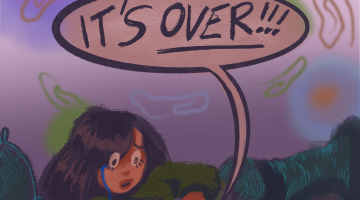You never know where you’re going until you know where you’ve been.” Growing up in a house full of history lovers, the importance of an adage such as this one was never lost on me. My dad would always use his excellent storytelling abilities to teach me things about my family’s history.
As he would tell me the captivating stories of generations past, I often felt a growing love for my ancestors. Their narratives spoke to me and helped me develop a true connection to so many people that I never actually met. That’s the power of history: it establishes a link to the individuals and events that paved the path for the life you experience today.
This fascination with history has always guided my interests, so when I came to the University of Nevada, Reno 3 1/2 years ago, it became a common ritual to spend my Friday mornings pouring over old Artemisia yearbooks. Tucked away in a small room in Morrill Hall, I would spend hours immersing myself in the history contained in the yearbook pages. From the 19th to the 21st century, each yearbook told a uniquely important story of the formation of this campus.
If you open up an Artemisia from the 1800s, you’ll notice that the school had not yet opened its doors to women. Fast-forward some years to the 1920s and you will not only find women, but also discover the women’s basketball team decked out in dresses, ready to play a game. This contrast demonstrates major growth at our university and even illustrates a larger story about the shifting societal norms at the turn of the century. The yearbooks act as a window through time that help the viewer better understand the constantly changing university campus that we call home today.
In my favorite decade of the Artemisia yearbook, the 1970s, you’ll find a politically- active campus that served as a breeding ground for new ideas. The black and white photographs of students protesting the Vietnam War paint a similar picture you might find in any history textbook. However, there’s something special about observing these events unfolding on our own campus through photos. When I walk through the scenic quad, I picture more than just my own experiences; I imagine all of the political activism that occurred in that very place so many years before I was even born. This is an important connection to have on a college campus.
By learning more about the university through the old Artemisias, I feel that I have a greater appreciation for the way our university has grown. As I rush to the Joe Crowley Student Union for a quick Starbucks between classes, I occasionally wonder where the students would rush to when the Jot Travis Building served as the student union. Instead of setting up camp on the fourth floor of the Knowledge Center, I sometimes picture where I may have studied in Getchell Library. These moments instill a sense of pride in my university because I can physically see the way it has grown and fanaticize about the way it will continue to change.
As we await the new fitness facility, residence hall and achievement center, we cannot forget how fortunate we are to attend a university that is still expanding every year. This campus is educating more students than ever before and the number will continue to grow over the next few years. That means even more students will have the opportunity to create memories here, gain an education and become the person they will be proud of.
Our university started from humble beginnings. It was a small land-grant university, originally located in Elko that was meant to only serve men. Over the years, this university has grown and created Rhodes scholars, governors, U.S. senators and more.
By understanding the history of how we’ve grown, we can evaluate the potential this university still has. By understanding the students that succeeded here before us, we can model ourselves off of their success. By understanding where we came from, we can figure out where we’re going.
In the same way my dad used to tell me stories about my family, I intend to tell my children stories about this university. One day I hope to bring them here so I can show them how much it has grown from when I was a student. The University of Nevada, Reno is a historically rich place full of fantastic stories; it’s just up to you to go out and find them.
Daniel Coffey studies journalism. He can be reached at dcoffey@unr.edu.










